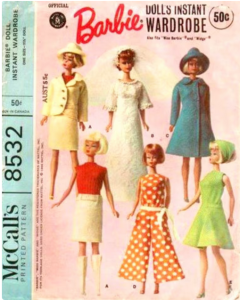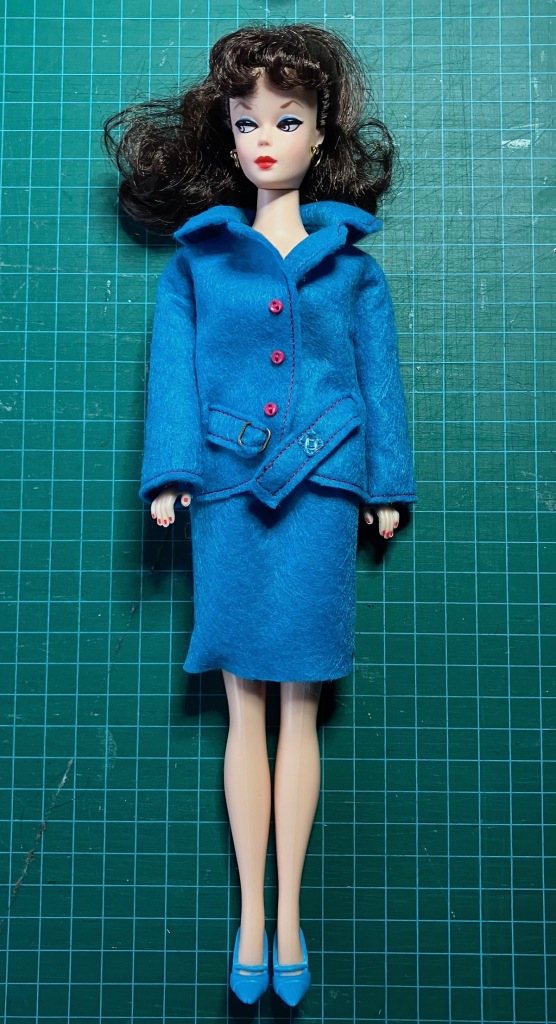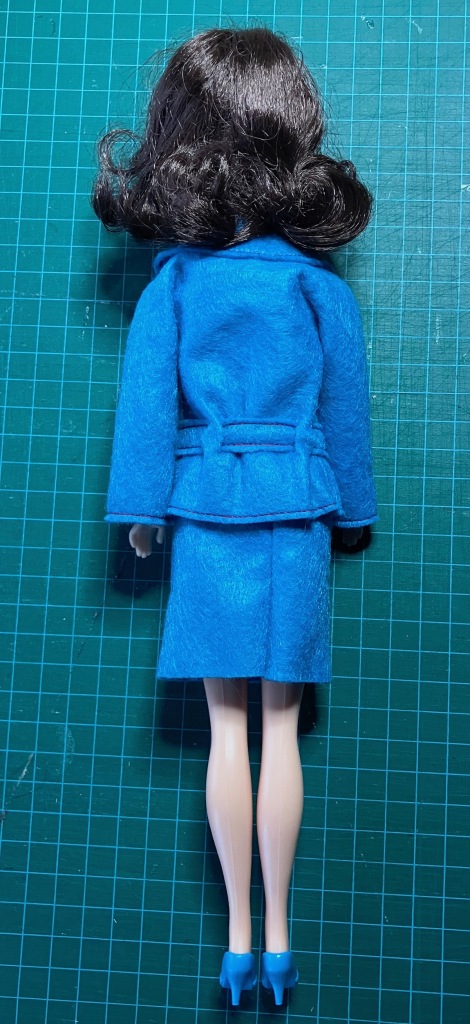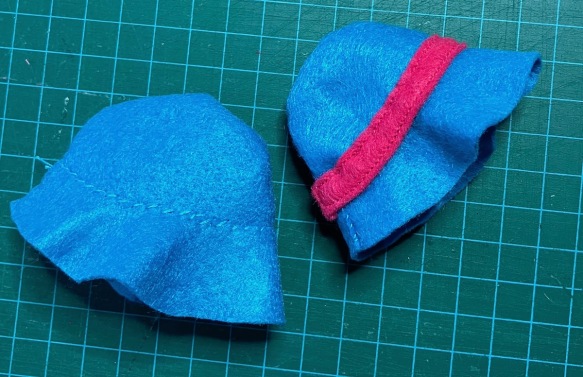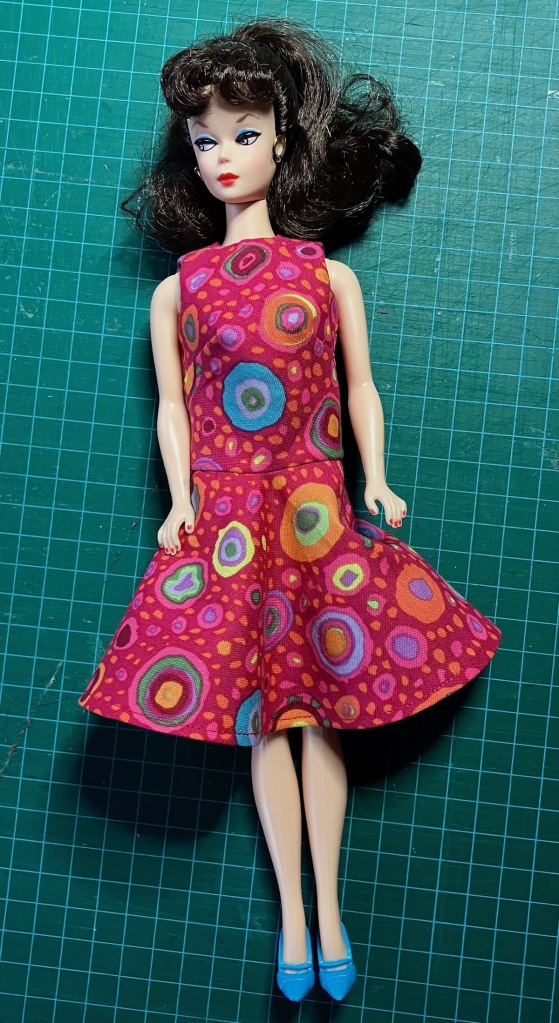This is an older sewing pattern for dolls that I found on Etsy as a digital download. Once upon a time, my grandmother made pantsuits with palazzo pants for my dolls and I wondered whether this might have been the pattern she used.
After downloading it, though, I realized there was a very neat feature about the designs – the suit and the coat are made of felt, so there are no edges to finish. In scale, it’s as if they’re made of boiled wool. Hmm.
One thing that is good about this download is that there’s a tape measure on each page of the PDF. This should make it easier to ensure that the pattern pieces are printed to scale. More about that in a minute.
Here’s my first attempt at the suit. The jacket is great as is (and very clever, too) but the skirt is meh, IMO. It’s just a tube with a paperbag waist and the same kind of belt-and-slits finish as the jacket. The result is quite bulky around her waist. I’m not showing you the paperbag waist because, well, meh. We can do better. 🙂
I’m a little concerned about how well the felt belt will wear. (There’s another one on the skirt.) With a lot of play, I could see it just shredding apart. I may make a fake leather belt next time.
The hat was enormous, probably to go over those early 60’s bubble cuts, so I cut it way down for the version on the right.
It’s still a bucket hat, so not the most flattering option possible. I like the felt, though, and it’s got me thinking about tweaking it to a more vintage style.
The dress had a lined skirt but an unlined bodice. I chose to do it the other way around since lining the bodice makes it easier to finish the neck and sleeve edges in this scale. I also modified the back to have an overlap in my usual way. I like it in this Kaffe Fasset cotton print.
There’s a triangular kerchief to match the dress that irked me a bit. I made two and hemmed hemmed them in two different ways – one with the edges turned under twice, as per the pattern, and one with fusible interfacing on the edges, then turned under once and zigzagged – but I don’t like either particularly. Maybe it needs a snap – there’s not much fabric to tie it in place. Hmm.
The knit top that is supposed to be sewn into the skirt came out so big that it fit Tyler instead of Barbie. Again, the construction is interesting so I’ll modify it a bit to make a t-shirt pattern for both Tyler and Barbie. I printed the pattern page so that the included tape measure is exactly right, but this makes me wonder whether the tape measure image was added later than the scan of the pattern piece – and is actually wrong. Hmm.
I still have to sew up the pantsuit, which I cut of a woven rayon jungle print, just for fun.
This pattern also made me aware of a lack in my doll accessories – I don’t have any white go-go boots for B. I have tall white boots for her, but am now on the hunt for those mid-calf ones. They’d look great with that dress.
Like most doll patterns, this one needs a few tweaks to bring me joy, but there are details I like about it as it is. I really like the felt for a jacket that resembles boiled wool, so I cut out another one. Inspired by a Simplicity pattern for women, I all add darts to the waist of the jacket to give it some shaping. I’m also going to modify the paperbag waist on the skirt – there’s too much bulk with it under the jacket as is. I’ll show you that and the pantsuit when they’re done. I’ll probably make the coat, too, and another hat. It really is an instant wardrobe!

